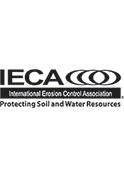
Fall Into Prime Planting Season
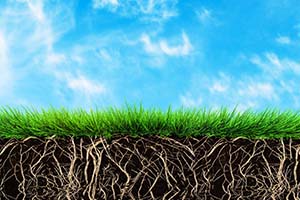
Most of us look at the grass growing in our yards or the shrubs and plants in our landscapes and see the green, the foliage, the blooms, the colors. But what about what lies beneath? We’re talking about soil, and much like how the foundation of a home is what determines the structure’s integrity—soil is the foundation for planting. Soil temperature and quality is the ultimate determining factor in whether plants will thrive or struggle.
So, why are we talking about soil right now? Soil is always the most important aspect of planting, but we’re really focused on getting trees, shrubs, perennials and grass in the ground now because fall is the optimum time to plant.
Fall Season Planting Pros
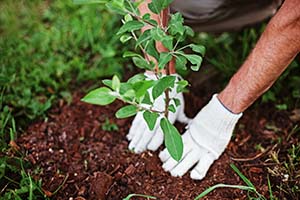
The autumn season has a few key factors going for plants and turf.
- Cooler temperatures – We’re out of the summer hot-drought time of year and into a time when plants—especially young ones—experience less stress and can get a healthy start. At the same time, the ground is still warm enough to plant.
- Moisture – This time of year, the days are shorter, and we see often dew sitting on the grass when we wake in the morning. There’s generally more precipitation, and this again means less stress on young plants and grass seed.
- Establishment – When you plant in the fall while soil temperatures are still warm, plant can root and mature as we enter into winter, when the ground is also receiving more moisture, and into the spring when we usually experience rain that continues to support healthy plant growth. We think fall is an even better time to plant than spring for these reasons.
- Plant sales! – Nurseries are interested in shedding their existing inventory of trees, shrubs and perennials to make room for new introductions in the spring. So, you’ll often find deals like buy-one-get-one or discounts that allow you to buy bigger plants than you might if you were making purchases in spring. So, you’re getting even more of a head start by planting in fall so specimens have time to get rooted before the next summer’s hot weather, and you can stretch your budget to get more mature plants.
The Best Soil Set-Up
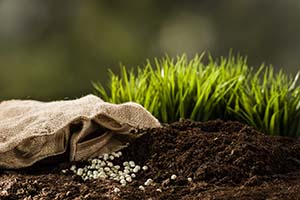
You can spend hours re-seeding a lawn or digging in beds to plant a new tree, shrub or perennial—but if you neglect to prepare the soil, you’re potentially gambling away your time, energy and money. Soil is the key for planting success. Roots soak in moisture, nutrients and oxygen from soil. And we know that soil gets depleted of these resources over time, or it lacks the right balance of “good stuff” for plants. That is, unless you feed the soil with what it needs to support plants. It’s easier than you think.
We take vitamins to supplement the food we eat in case we’re missing out on vital nutrients. We can do the same for soil, and basically give our plants a form of health insurance. It’s much cheaper to boost your soil than to pay for plants—and then continue replacing them, or your grass, when they fail.
Here is what our soil experts recommend so you can take advantage of this prime fall planting season, which usually lasts through Thanksgiving, weather depending.
Protect Grass Seed. Now is a great time to plant a new lawn. Seeds will germinate and grass will grow before we head into winter, and you’ll spend less time and money watering. But you know what prevents grass seed from “taking” (germinating)? When seed dries out, it basically ends up becoming bird food. In order for grass seed to germinate, the seed must stay moist.
>>The Solution: Soil Moist Seed Coat contains a polymer compound that helps seed retain moisture from water and air. Moisture softens seed, which promotes faster germination. Seed Coat does what its name says: the powder formula coats seeds, and you only need 8 ounces of it for every 50 pounds of seed. So, it’s a cost-effective, environmentally-friendly solution that can be used on any type of grass seed. Just mix it into the seed you pour into a spreader before applying seed to prepared soil.
>>Bonus Step: Prepare soil while cutting down on watering over the long-term. Before applying grass seed, pour granular Soil Moist into a spreader and use the recommended rates on our packaging to input the correct amount of product on to the planting area. Then, either rototill or work in the product. Soil Moist lasts three to five years, and Soil Moist Plus can reduce watering by up to 50 percent.
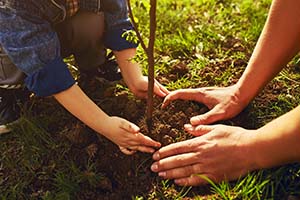
Give Plants a Head Start. When preparing a landscape bed for a tree, shrub, perennial or bulb, first till in a “boost” that will help soil retain moisture to feed roots. In many ways, soil can end up being junk food for plants because it’s missing critical nitrogen, potassium, phosphorus, oxygen and other beneficial biologicals that we can’t see but plants need. When you prepare soil first, and amend it with fertilizer to nourish plants, you’ll have much better success.
>>The Solution: Soil Moist Transplant contains organic material—ectomycorrhizal and endomycorrhizal propagules—that feed plants, along with water-storing polymers. There’s a specific product for trees and shrubs, as well. Simply work it into the hole you dig before planting.
>>Bonus Step: Soil Moist Transplant Plus contains all the good stuff you’ll find in the main transplant product, plus fertilizer to promote health plant establishment and growth.
Happy Planting!
Take advantage of this time to improve your landscape and take advantage of sales where you can get more landscaping for your dollar. And don’t leave out the crucial step of preparing soil so you can preserve your investment and give new trees, shrubs, perennials, and grass seed a head start on spring.
Learn more about JRM Chemicals products, and contact us if you have any questions or would like some planting tips. We’d love to hear from you!
Back to Blog »


